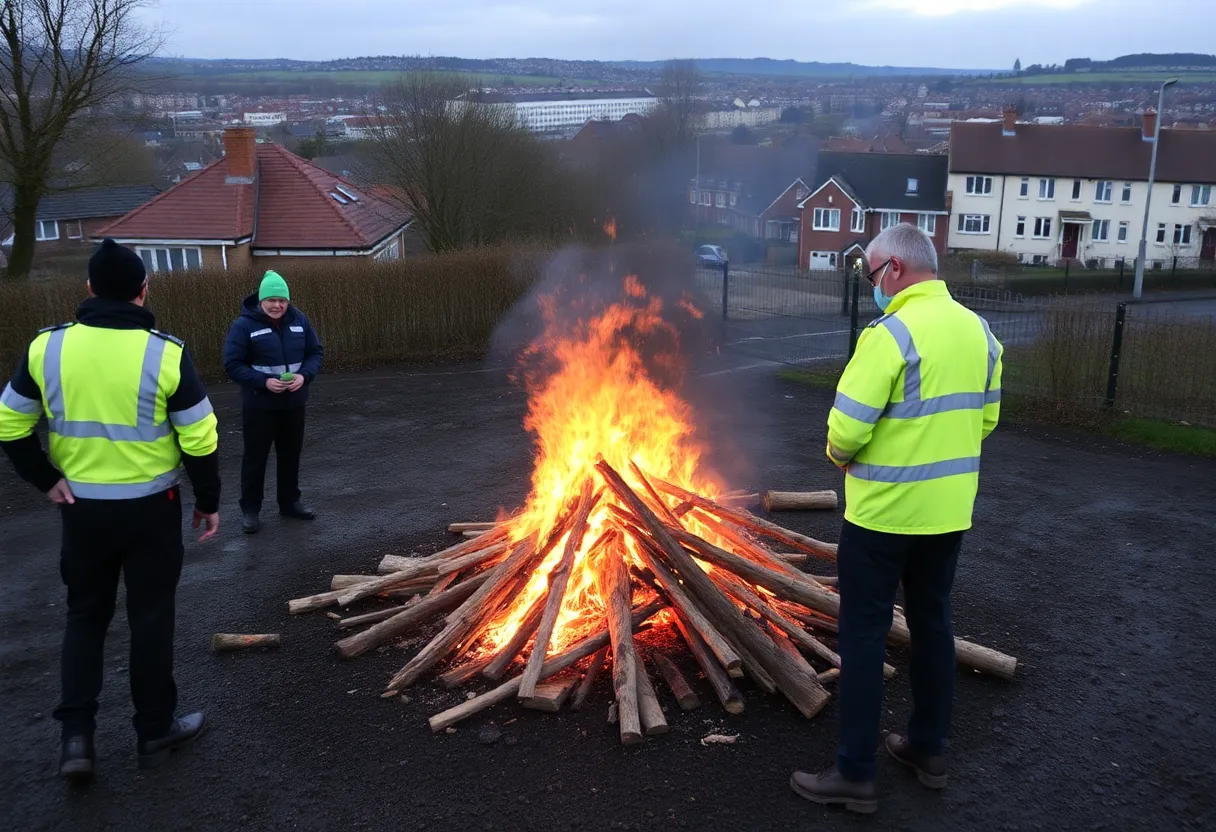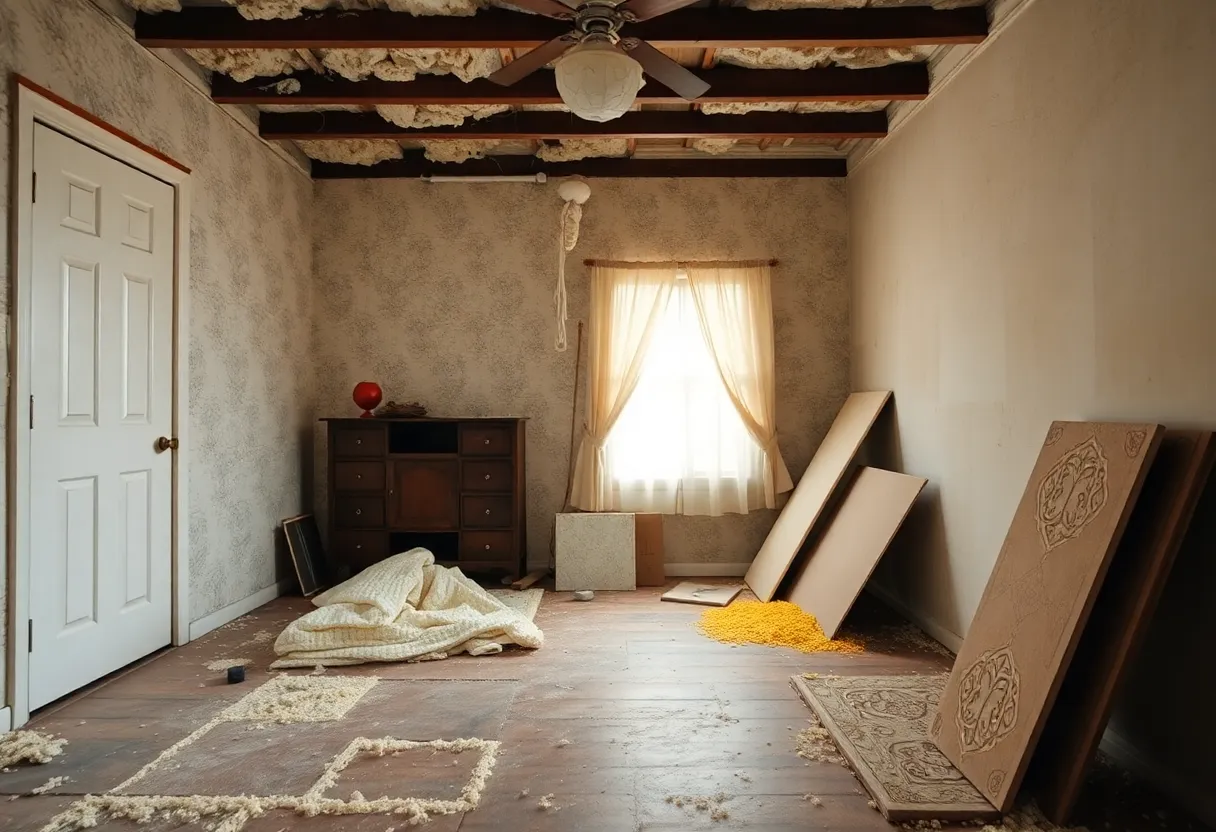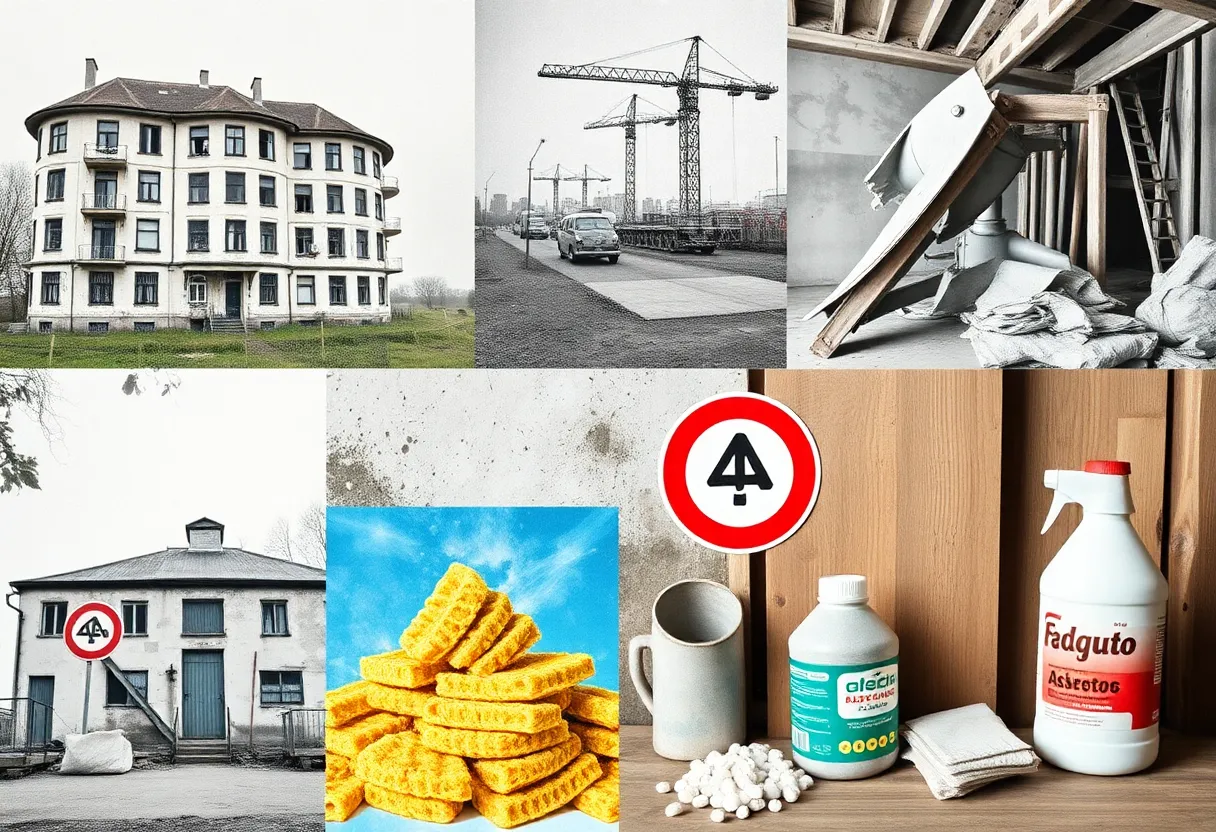News Summary
Concerns about public health have escalated in South Belfast following the discovery of asbestos at a traditional bonfire site. The local government and environmental agencies have faced criticism for their slow response to the asbestos issue, which came to light just before the Eleventh Night celebrations. Despite the Northern Ireland Environment Agency’s removal of some materials, further asbestos remains, sparking public safety fears among community members. Ongoing discussions emphasize the need to balance cultural traditions with health risks.
Asbestos Concerns Loom Over Controversial Bonfire in Northern Ireland
Recent events surrounding a notorious bonfire site in South Belfast have raised serious health and safety concerns, culminating in a response by local government and environmental agencies. Despite multiple warnings about the dangers associated with burning materials containing asbestos, it has emerged that the hazardous material was indeed present at the bonfire site, casting a shadow over traditional celebrations.
Inquiries and Delays in Asbestos Removal
Belfast City Council has come under fire for its decision to withhold information regarding when it first became aware of the asbestos presence at the controversial bonfire site. This refusal has been linked to ongoing criminal inquiries and legal proceedings, adding a layer of complexity to the already precarious situation.
The Northern Ireland Environment Agency (NIEA) confirmed that approximately 20kg of asbestos was removed from the location, but additional fragments were still noted on-site. It was reported that the NIEA was alerted to the issue on May 16, yet the agency failed to execute a safe removal before the Eleventh Night, further exacerbating safety concerns.
Political Tensions and Public Safety
Environment Minister Andrew Muir has voiced his concerns about the event and has urged the public not to light or attend the bonfire. His defense of the NIEA’s handling of the situation has not mitigated tensions, as political opponents have accused him of inadequate oversight. The absence of timely action has been highlighted, raising questions about the prioritization of public safety.
The close proximity of the bonfire to an electricity substation that supplies power to two major hospitals has added a critical layer of urgency to the situation. Experts warn that this proximity presents an unnecessary risk not only to the public but also to essential services.
Cultural Significance vs. Safety Risks
The bonfires are a longstanding tradition in some unionist areas to commemorate the Eleventh Night, a celebration leading up to the Twelfth of July, which marks the Battle of the Boyne in 1690. While many community members express strong emotional ties to this cultural significance, others are increasingly vocal about their apprehensions regarding public safety.
Rev Mervyn Gibson, the grand secretary of the Orange Order, criticized environmental agencies for not acting sooner on the asbestos issue, suggesting that it has been a concern since 2017. Former political officials have echoed these sentiments, advising against the ignition of the bonfire while cautioning builders about the repercussions of proceeding with construction amidst ongoing asbestos risks.
Community Responses and Police Involvement
Amid this tumult, public safety concerns have reached a boiling point. Local Sinn Féin representatives are calling for immediate assessments of the remaining asbestos and a thorough evaluation of risks. Meanwhile, police have made the controversial decision not to assist in dismantling the bonfire, believing that the situation was manageable without contractor involvement.
This decision, however, did not sit well with everyone. Local politicians have expressed a spectrum of reactions—some viewing the police’s action as common sense, while others lamented the lack of intervention to safeguard the community.
Future Outlook and Ongoing Discussions
As discussions around public health and safety continue, local authorities are grappling with managing the remnants of the bonfire and their implications. The Belfast City Council has voted to request immediate action from the environment minister regarding the remaining asbestos, while residents seek to maintain their cultural traditions amidst the looming threat of public health hazards.
The involvement of Boron Developments, a land development company associated with the site since 2017, has also come under scrutiny, with claims that delays in asbestos removal stemmed from ongoing bonfire construction activities by community members.
In summary, the tension between preserving cultural heritage and ensuring public safety is palpable as authorities navigate this contentious issue. The months ahead will undoubtedly provide crucial insights into how the community, local government, and environmental agencies handle this delicate balance.
Deeper Dive: News & Info About This Topic
HERE Resources
Tragic Death of Former Glazier Highlights Asbestos Danger
Legal Battle Over Asbestos Exposure Claims Another Life
Multnomah County Issues Asbestos Exposure Warning
Controversy Erupts Over Eleventh Night Bonfires in Northern Ireland
New Asbestos Framework Aims to Tackle Hazards Across the North of England
Shocking Asbestos Disposal Case in Cornwall Highlights Environmental Negligence
Novel Immunotherapy Trial Targets Mesothelioma and Solid Tumors
Major Legal Victory for Lovell Family: $42 Million Mesothelioma Award Against Johnson & Johnson
Scourge of Asbestos: Illegal Dumping on the Rise in Northern Ireland
Northern Ireland Confronts Asbestos Crisis Amid Illegal Dumping
Additional Resources
- BBC News: Asbestos Concerns in Northern Ireland
- Wikipedia: Asbestos
- The Guardian: Belfast Bonfire Controversy
- Google Search: Belfast Bonfire Asbestos
- BBC News: Political Tensions Over Bonfire
- Google Scholar: Public Safety Bonfire Northern Ireland
- The Guardian: Political Responses to Bonfire Safety
- Encyclopedia Britannica: Bonfire



















